CCS Insights have predicted that 411 million wearable technology devices will be sold by 2020. Eyewear, wristbands and watches are the most popular, while fitness, activity & sports trackers will account for 45% of wearable tech sales.
But how will this affect the marketing world?
iBeacons
iBeacon, a standard for beacons developed by Apple, uses Bluetooth Low Energy (BLE) proximity sensing to transmit a universally unique identifier which is picked up by a compatible app.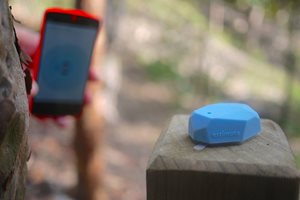
iBeacons work with location services to alert apps when you approach or leave a certain location as well as knowing when you’re close to a beacon, allowing business for example to target those users nearby with the business’ app.
Businesses such as Apple, Samsung, Microsoft and Sony have all brought out smartwatch products, that can be used as iBeacons. As explained by PRNewswire, US supermarket chain Marsh partnered with inMarket to create an iBeacon experience in store. The users will receive targeted information such as shopping lists, offers on items and recipes to the user’s smartwatch device.
Earning rewards with activity trackers
With the number of fitness, activity & sports trackers predicted to rise to 187 million by 2020, technology can play an even more important role in changing people’s behaviour.
Health insurer Vitality offer a reward program with their insurance policies, where users can link various activity trackers to collect points, which can then be put towards rewards such as a free Starbucks coffee, cinema tickets and iTunes vouchers.
According to Marketing Week, 61% of new customers started earning Vitality points by the end of their first three weeks as a policy holder, while 20% earned points on their first day, indicating the rewards play an important part in the decision to take out a health insurance plan.
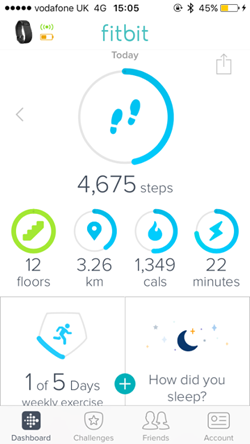
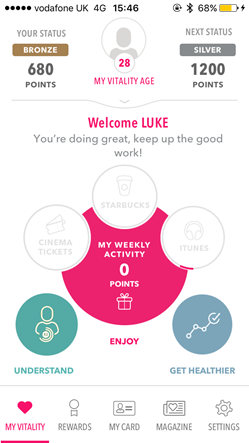
(As you can see my step-count needs some improvement)
Voice Search
Android Wear products such as the Moto 360 Sport, Fossil Q Founder and the Huawei Watch have the ‘OK Google’ voice search function. This allows wearers to search for information such as “how do you say hello in French?”, “what time is it in New York?” or “what’s the Oxford United score?” (Most likely winning).
Apple’s Watch uses a similar funct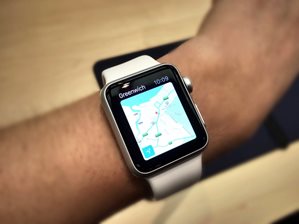 ion, with its popular Siri feature. users can perform image searches, Google maps and weather queries.
ion, with its popular Siri feature. users can perform image searches, Google maps and weather queries.
As Campaign Live explains, the way we interact with voice search is different to text search. The average number of words used in text searches is around 1-3, while voice search tends to be 3-5, with words such as who, what, where, why, when and how used commonly. For marketers, this suggests that content should be written in a more conversational style that answers these type of questions.
Wearable Payments
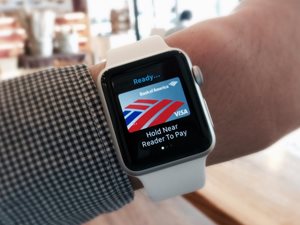
Apple watches come with Apple Pay technology included from the start. This works independently from the user’s IPhone, so users don’t have to delve into their pockets/bags to get their phone out.
In the US, 35% of merchants are using Apple Pay and this number would be similar for Android Pay due to a similar technology being used.
Google have recently announced that Google Pay will be introduced to Android Wear 2.0 devices in early 2017, leaving these devices to lag behind the Apple watch in terms of market share.
Wearable Apps
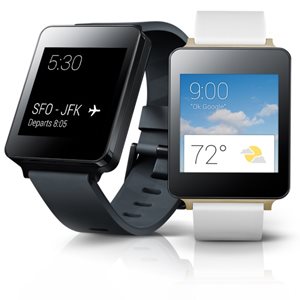
Both the Apple Watch and Android wear have dedicated app stores for smartwatch apps. Due to limitations such as screen size, these apps have to be designed in such a way that it doesn’t restrict usability.
Brands like Spotify, Duolingo and Evernote have used to screen size to their advantage, producing slimmed down versions of their mobile apps, with the Spotify app allowing you to choose a new track, pausing the current track being played on the connected mobile.
With over 10,000 apps on the Apple watch store and over 4,000 on the Android wear app store, compared to the mobile Apple app store which as 2 million apps and the Android Store which has 2.2 million apps and while people may view these as becoming saturated, it has led to a need for well designed, user friendly apps. This should be the same for wearable apps, with the limitations that come with these.
Smart Clothing
While watches and wristbands are the most popular and widely used type of wearable technology, there are plenty of other types, from socks which track your running style, to a contactless payment jacket and a baby monitor sock.
Like the watches and wristbands, a large number of smart clothing is aimed at those who work out and go to the gym on a regular basis.
One market that is seeing an increase in wearable technology is in the medical sector. Products range from a prototype smart baby hat that monitors the vital signs such as temperature, heart rate, respiratory rate and oxygen levels, to a shirt designed to monitor heart rate, blood pressure and breathing rate are available and are leading to adoption of this technology in patient care.
Wearable technology can make user engagement with brands useful, relevent and meaningful
To summarise, technological advances have led to a steep rise in adoption of wearable technology, and this will impact the world of marketing greatly. A change in the way we search for things, pay for things and receive information opens up a massive opportunity to interact with users in a way that was previously impossible.